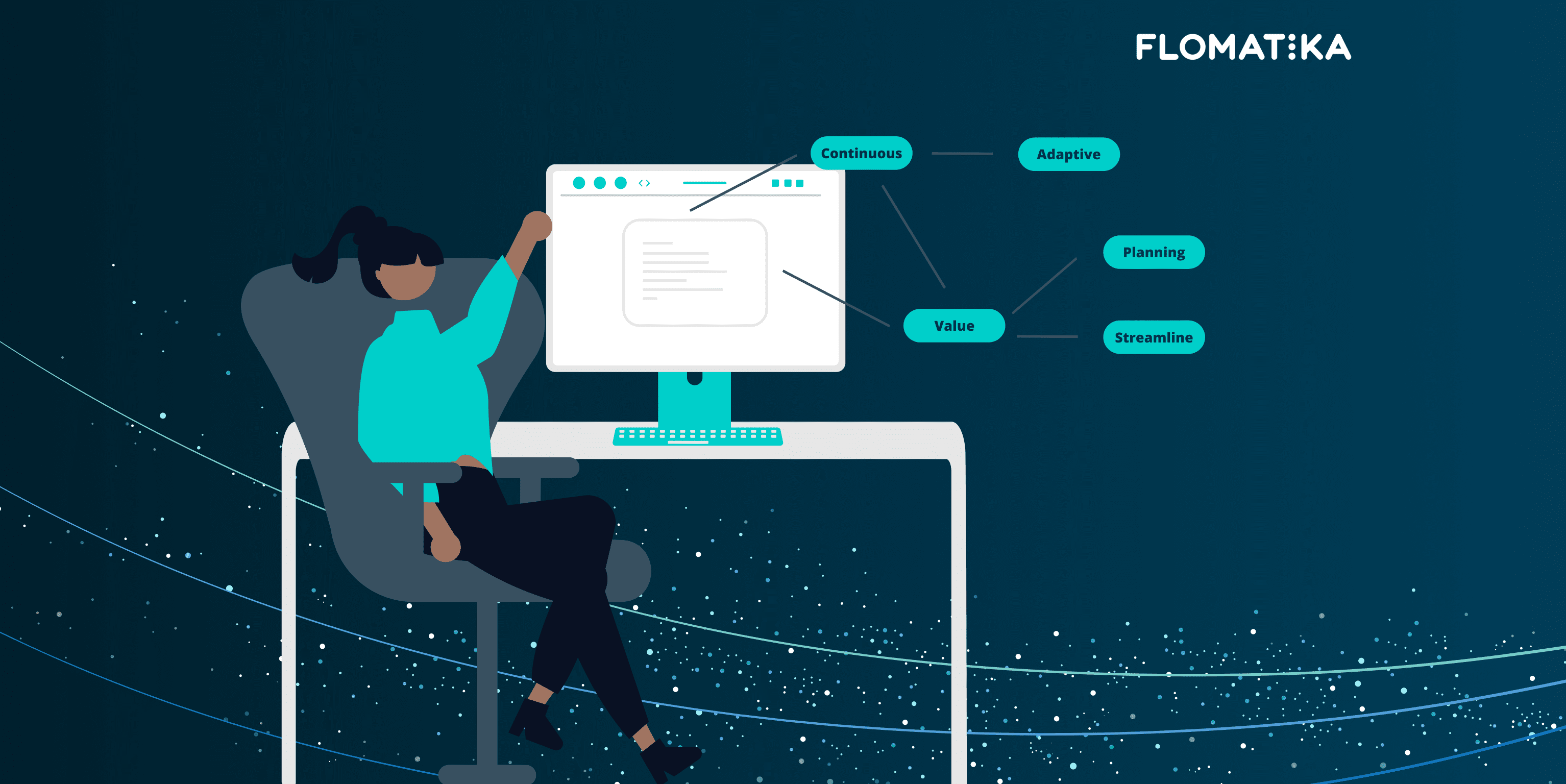The Virtual Obeya: Leading without being in the room

Are you ready to optimise your delivery ecosystem today?
book demoThe term ‘Obeya’ originated at Toyota in the 90s while the Prius was in development. Chief engineer of the project, Takeshi Uchiyamada, was fearful that his lack of authority when it came to decision-making could see him overrun by more experienced discipline leaders, to the detriment of the project. This need for senior support is what manifested in the very first ‘Obeya’, which means ‘large room’ in Japanese. Dubbed an area for mutual discussion with all leaders across the project, this space empowered Uchiyamada with full transparency and effective governance from conception to delivery.
In a small-scale setting, this format may suffice. However, in an age of large-format, agile working, getting key stakeholders in a room regularly is a near impossible feat, particularly in the post-pandemic era, where team members are distributed across cities and countries, not just levels in a building.
Enter the virtual Obeya—the key to leading the way without being in the room.
The power of Obeya
Imagine a leadership team walking into a room, and everything they need to know to take actions and make good decisions is right there on the wall. They wouldn’t have to spend time questioning teams, disrupting the flow of work or getting involved when it wasn't necessary. That’s the point of the Obeya room—to put everything you need to make sound decisions and have clear foresight over the product delivery ecosystem in one highly-visual place.
But as ways of working develop and adapt, and integrated teams are now equipped to collaborate across all four corners of the world, this workforce distribution calls for a new way to stay united, informed and visible. This is where a virtual Obeya is the next step in IT governance.
The virtual room opening the door to real-world visibility
The COVD-19 pandemic has had a hand in fast-tracking the need for remote, collaborative working. However, the requirement for it was already well and truly there, long before the first advent of hybrid working. As workforces expanded beyond single locations, the question of how to make informed and effective decisions from outside the room first arose.
All of a sudden, leaders found they had no visibility over what was happening within their agile teams—they only knew what they’d been told, which means they weren’t aware they were missing delivery dates or failing to deliver on commitments until after the fact. Pair that with a cumbersome reporting process and leaders were stretched for time, foresight and the ability to make the right interventions.
Hence, the invention of the virtual Obeya room—a place that provides the conditions for teams to collaborate effectively, make informed decisions and solve important problems, all without being inside the physical room.
In essence, the aim of an Obeya is to provide visibility for leaders, but also autonomy, and clarity of purpose to teams.
At the program level, the typical objectives people are trying to achieve through the use of a virtual Obeya include:
- Making informed decisions swiftly with support from technical experts
- Aligning the team around key business goals
- Enabling cross-team integration, communication and dependency management
- Gain early visibility of problems
- Promote and facilitate collaboration and problem solving.
The trick to achieving these objectives lies in visualising them.
What to visualise in a virtual Obeya
Visualising the work shows you how everyone’s progress, collective goals, dependencies and risks fit together. Highlighting interdependencies will also provide context to what happens when milestones are missed. It’s this shared understanding and shared sense of responsibility that makes a virtual Obeya room so valuable.
Here’s what the Lean Enterprise Institute recommends you make visual:
- Your product vision
- Performance attributes
- Leading metrics
- Project schedule (roadmap)
- Function-specific/ownable spaces
- Important information required for cross-team collaboration
- Knowledge gaps and plans to close
- Concept sketches/product mockups
What’s important to note is that your Obeya room will evolve and adapt as your product delivery does. Not everything needs to be visualised at every stage. In the spirit of continuous improvement, you should be trimming the ‘fluff’ at each phase to ensure what’s essential takes precedence in your Obeya. And who decides what’s important is the collective team—that way every person involved understands its importance.
However, what your virtual Obeya room can actually do depends on the capabilities of the platform you choose.
Flomatika’s virtual Obeya: re-establishing effective governance
A new feature of Flomatika’s value stream management platform is a virtual Obeya—a place where leaders can have all the information related to their delivery ecosystem at their fingertips. You can connect your strategy to execution, understand how your teams, products and services are improving over time and how they compare to others inside and outside your organisation.
It’s here that individual contributors and leaders can flick across different iterations (product increments or sprints) and know at a glance where initiatives are at without disrupting teams with time-consuming emails, calls and instant messages. Instead, you can access insights on value, cost, progress, risks, dependencies and blockers, as well as vital confidence and predictive analyses to ensure you’re always one step ahead. All without taking even a second of your team’s time, let alone hours spent putting together manual reports.
At a glance, you can know the likelihood of delivering on your commitments, which teams are lagging, what functions are most efficient and whether you’ll hit your delivery date. Imagine knowing a feature won’t go live in time months before its scheduled due date, instead of mere days. In this regard, an Obeya can be the difference between a hiccup and a disaster.
Your chance to retain internal control
By adopting robust software, like a virtual Obeya room, you’re empowered with a consolidated view of your entire value stream from a single dashboard equipped with role-based views. You’ll no longer rely on time-consuming reporting processes that detract from delivery but will instead have real-time visibility across the micro phases and macro picture, helping you make important and informed decisions from outside the room.










%20(1).jpg)
.jpg)
